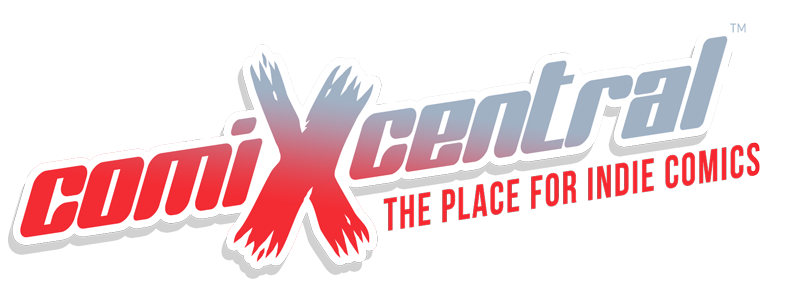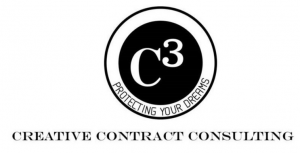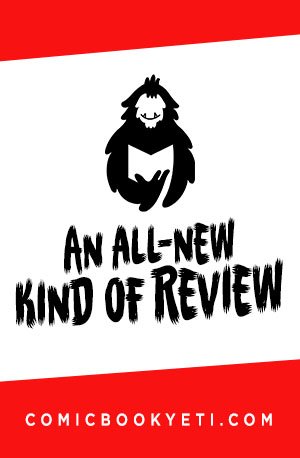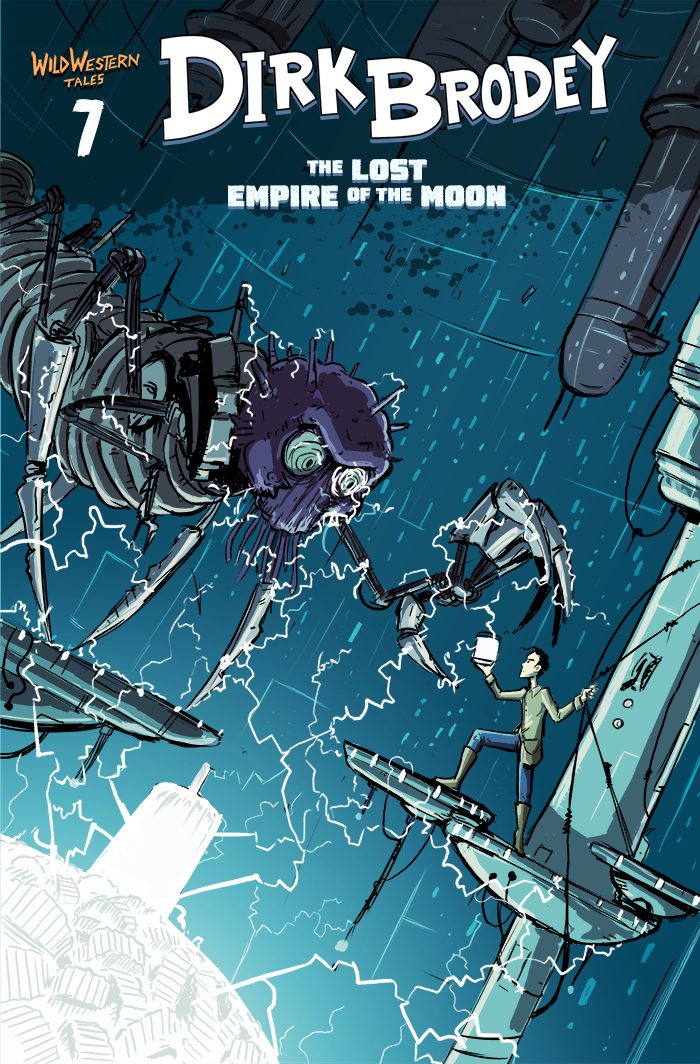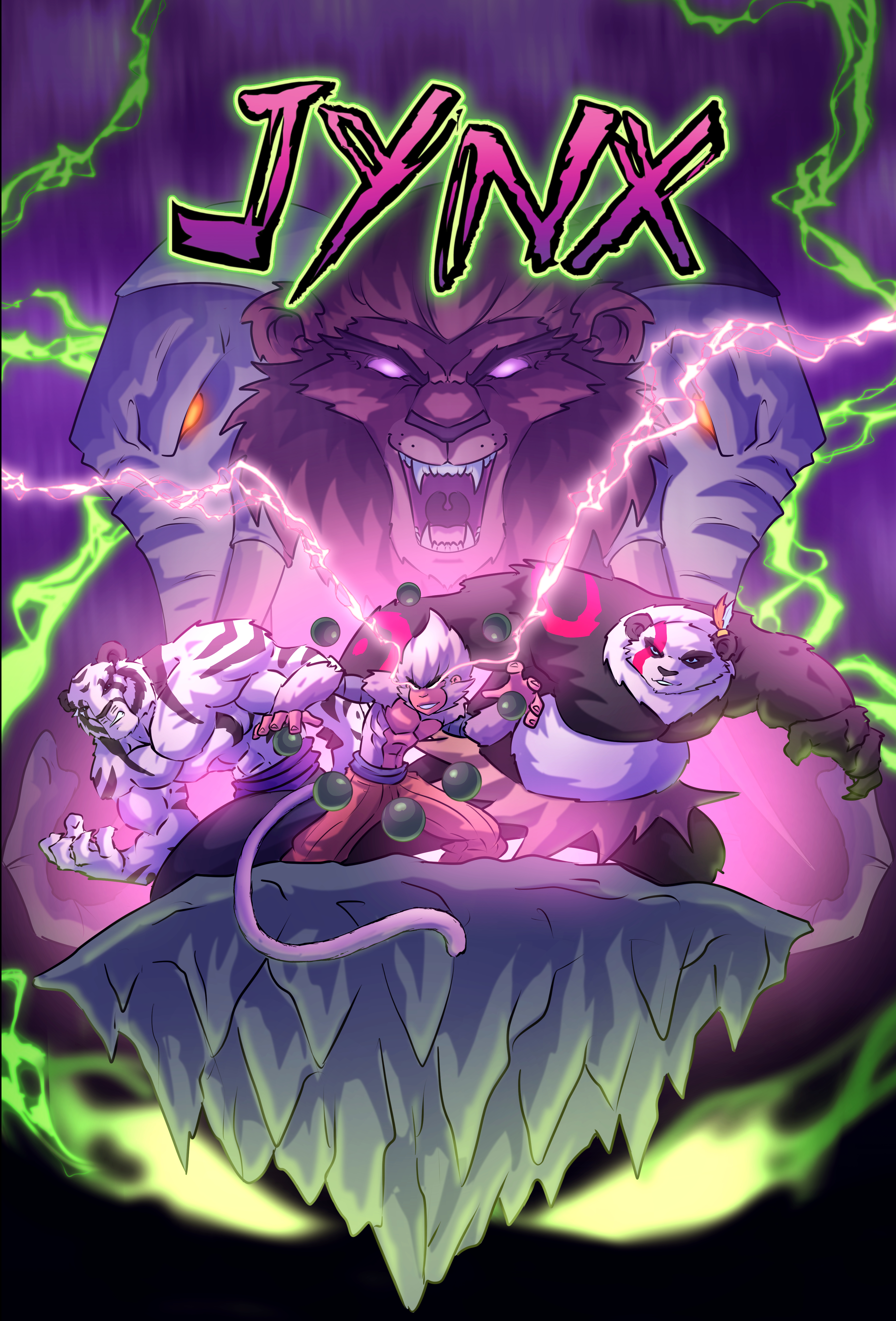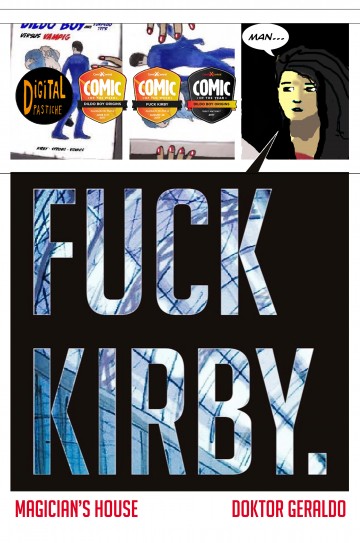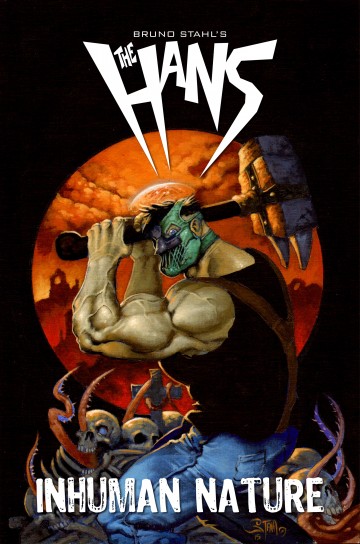What’s shakin’, cartoon cartels? Welcome to another episode of I Think I Might Know What I’m Talking About (Maybe Sort of a Little Bit) by Chris Hendricks, sponsored by Comix Central.
In case you were wondering, the title does reference Spaceballs, the ultimate parody of everyone’s favorite star odyssey that didn’t feature Patrick Stewart or William Shatner. On a rather important note- If you don’t like Spaceballs: The Movie, please do normal people a favor and go away. I’m happy to assist you in shuffling off this mortal coil with the use of my trusty Spaceballs: The Flamethrower. Now that the terrible people have been cremated, let us continue.
Today we’re talking about, you guessed it, making money as an artist… again. Why, you ask? Because I hear a glimmer of hope beneath your mocking laughter of disbelief. Oh yes, my apprentices of art appreciation, you may still laugh. You may even call me a madman, but I told you before, and I’ll tell you again: it can be done. These “successful” creatures exist. Granted, it’s rumors mostly. They participate in foreign rituals like eating non-Ramen-like, energy-sustaining food products three times a day. I hear they also drive cars without the check engine light on and have personal relationships outside of immediate family and beyond that kid you decided to loan your retainer to in fifth grade who for some reason still comes over to play Magic: The Gathering even though you don’t really “get” each other.
These money-making artist types are troublesome. The frisky unicorns are as rare as a Polish Leprechaun sunbathing in the South Pacific. Lucky for you, I’ve been navigating their rainbow road for sometime. Stay in the middle of my flow, brothers and sisters, and we might get somewhere. I’ll teach you to avoid some red turtle shells along the way, so you can at least cross the finish line in the money race without becoming a total wreck. Let’s pull our nerdtastic-selves together, and we’ll get out of mom’s basement yet. The best part, of course, is that we’ll do it on our own terms. Rise up off the couch and start your engines, people. Let us not simply survive off our passions, but thrive! At the end of this journey, you won’t just find the unicorn, my friends. You will become the unicorn.
The last time we crossed this bridge together, the preparation provided was largely mental and philosophical in nature. This time I’d like to give you insight into some real tactics I’ve learned along the way. I should warn you: this piece is as much a rant against lazy people as it is a learning opportunity. Not to worry. If you’re reading this article, you are not a lazy person. If you want to make money doing art, your desire must be genuine, and we all know that learning is the first step to genuine understanding. Most learn by asking questions, so let me begin by asking, how serious are you really?
Most creatives, including myself, are one ADHD moment away from hobbyland. There’s nothing wrong with hobbyland. It’s a carefree kind of kingdom, somewhere around the end of world one or two, but I’m sorry, Mario, the princess is in another castle. Toadstools won’t pay the mortgage, and there’s no warp whistles in this game. If you want to afford a kingdom for your king or queen, you’re going to have to face the greatest Bowser of them all: consistency.
via GIPHY
If you want money as an artist, earn it. You must learn to treat it like a job. That means working on your craft at least three to five times a week. Part-time or full-time, make it happen. Most of the unicorns I know currently paying bills with skills work on their magic everyday. Call me a snob all you want, but the bottom-line is that work ethic is your greatest asset. It’s the only thing you can control. If you’re really serious, then take advantage of the fact that you care more than the other guy. I encourage you to think of the free time you have as a sort of currency you exchange for future freedom. If you can’t do 9am-5pm, then do 7pm-1am. Get up early, and do 6am-8am before your day job. If you wish to exist inside the business of art, then Weekends are prime time for the art of business. Fruits of opportunity are born inside seeds of dedication. In other words, “I don’t have time” equals “I’m not an artist.” I know some of you are afraid of structure when it comes to things you love, but if you want to stay the course, you’re gonna have to roll over the curious question box, hope for a feather, press the A button, and get over it.
If you want money as an artist, earn it. You must learn to treat it like a job.
Now that you’re keeping your foot on the gas, let’s examine some of the power-ups and pitfalls you’ll encounter on the road. My first piece of advice: watch where you’re going. Sounds simple, right? Well, you’d be surprised how many blind, angry, flaming-guitar-playing drivers exist in the art world. It’s sort of like the movie Mad Max: Fury Road, except this time you’re stuck in downtown Los Angeles, there’s a lot more drivers, you’re not Tom Hardy, you’re stuck in an ‘82 Pinto without any weapons, Charlize Theron has hair, and one of the other guys behind the wheel is an angry gorilla who throws bananas. Side note: If you actually do happen to be Tom Hardy, then congratulations on winning the life game. Otherwise, let’s keep going.
The only real way to avoid slippage and catch an upgrade is self-awareness. Learn who you are as an artist. Have the courage to give yourself an evaluation every-so-often. What are you good at? What do you suck at? Use that knowledge to evolve as a creator. Consistency is great, but it guarantees nothing without swerving the learning curve. Let’s say you’re an illustrator who consistently “draws” Harley Quinn, but your version of Harley Quinn consistently looks like a five-year-old girl’s first attempt at wearing clown makeup. The bottom-line: the only thing more important than consistency is growth.
The bottom-line: the only thing more important than consistency is growth.
Sometimes this happens naturally, but if not, the best and worst opportunity for this is social media. Ask the people you most admire for feedback. Eventually, you will develop a filter between the haters and the mentors. Like most upgrades in imagination land, this is something you earn over time. Thick skin requires experience points, and experience points sometimes mean “killing your darlings” for the sake of something better. On behalf of your self-esteem, remember one thing: Success is not external. The outside world does not determine your worth. Only you, the artist, can do that. Bear in mind I’m speaking to personal worth here. Monetary merit, on the other hand, is a little more complicated. That is determined by the market, and it can be a little overwhelming sometimes.
Success is not external. The outside world does not determine your worth.
It’s understandable if you feel pressure considering the amount of content out there right now. The road to success is always going to be a congested mess of warlords and wannabees. The fastest way to alleviate the pain is by accepting the truth and forging your own path. This doesn’t mean you will discover a shortcut, but it does mean there’s always room for you to get ahead. Sure, there’s a lot of content out there, but it’s not YOUR content. There are millions of pieces out there worthy of purchase, but there’s only one you. The sooner you figure that out, the sooner the rest of the world will. The sooner the rest of the world figures it out, the sooner you can use your passion to pay rent. You do this by giving your art monetary value. Sure, it takes awhile. You need to figure out what people charge. You might have to go up and down for a bit before you find the sweetspot for your service. So what? I don’t understand why people in the art community, and especially the indie-comic community I know personally, aren’t always up front about charging a fee. For some reason, when it comes to giving people a number, some creatives turn into some sort of Oliver Twist-reject in a poorly done, one-off Disney film. Does the following sound familiar at all?
Customer: “Hey there, how much is your drawing of Pennywise? It’s amazing!”
Artist: “Gee willikers, sir. Thanks for noticing! Gosh, I did work awful hard on this here piece. Now that you’re here, stranger, it looks more like a finger paintin’ than a true work of art. It’s Uhhhhh, 50 dollars.. I mean, maybe… well, I’ll go ahead and take 10 dollars if you can’t afford that. You know what? Actually, I just want to “get myself out there” so if you could just tell your friends….”
Me: WHAT THE HELL IS WRONG WITH YOU!
If your drawing of Pennywise is fifty dollars, it is fifty DOLLARS! If they don’t have ten dollars, guess what? They have to go work an extra hour at the Give-N-Go Gas Deluxe first, or they can’t have your hard work. You hear me, people? They have to go away until they return with your value. If they say, “I only have ten dollars.” You say (in a much more polite way), “Tough shit, my drawing is fifty dollars. It is fifty dollars because if you wanted it for free, you could’ve done it yourself, but you didn’t. That’s why you work at the Give-N-Go, and I draw things a lot.”
Listen, there are exceptions to every rule. There’s nothing really wrong with doing free stuff every once in awhile, but you’ve got to have the right intention around it. If you really want to do something for free, then do it because it’s the right thing to do. Don’t give the charity guy an immediate answer. Tell him you’ll think about it, and really think about it. If you are honestly being a good Samaritan here, fine. Now hear this: if you’re doing it for free because you’re afraid you’ll lose the opportunity for “artistic exchange,” then being poor is your own fault. This just happens to be a perfect pipe dream down into the next topic.
In the indie world there’s this debate about being a creator for hire versus the allure of profit sharing. The “hired-gun creator” usually gets an agreed-upon lump sum divided into two parts. The first half being a deposit (upfront payment allowing the artist to prioritize his/her time), and the second half being the remainder (the rest of the fee). Profit sharing usually happens with larger projects. If you’re a hired writer for instance, the head of the book may offer you a large percentage of ongoing sales in exchange for a smaller deposit upfront. If you’re a hired illustrator for an ongoing comic series, this is also common. My take is by no means a biblical breakdown of bartering skills. However, these are lessons I’ve usually learned the hard way. I hope this knowledge makes things easier for you.
Early on, if you really want to start paying for things with art, I suggest the hired-gun approach. It’s simple, it’s immediate, and it’s a wonderful way to learn the business as you go. The clientele that you serve will prefer quality and a quick(ish) turn around time. Find a way to serve them well and protect yourself at the same time. A good reputation with these people who hire you is critical, but you’re not a piece of meat. Creative newbies can be very trusting, and therefore, sometimes get taken advantage of. If you really know your worth, then get comfortable setting boundaries. For example, if you’re an illustrator, you might consider giving the client the opportunity for 2 free full revisions. After that, you charge a per-hour penalty for your time. Otherwise you may wind up drawing the same Poison Ivy with 100 different noses for six months. As a writer, there are only so many drafts you can shell out. The same rules apply. After a few rewrites, there needs to be a draft fee. Make sure the clients are aware of everything up front. If you can’t eat while working on the project, the project shouldn’t be a priority. Again, I learned this the hard way. I once ate cheese off of cardboard while writing a song for a client. Don’t short-change yourself, and definitely don’t eat cheese off of cardboard.
If you do things right, your confidence should increase with each project. Remember to have faith, and always challenge yourself. Lastly, don’t be afraid to say no to a project. It seems counter-intuitive, but when you do have the courage to ride away from something that isn’t serving you, that’s when you’ll really start going places.
If you do things right, your confidence should increase with each project.
Once you have gained a bit of experience, you might consider profit sharing. It’s a whole different circuit and has its own ups and downs. If I’m sticking with the Mario Kart metaphors, we’re sliding into 150cc territory here. The drivers of projects tend to (usually, but not always) be more experienced. The relationships are more long term. As a result, there can be more expectations, more assumptions, and more risk. It’s a great idea if you have a lot of faith in the project itself. If you really think the story, franchise, or business model is something special, then by all means, feel free to forgo immediate riches for a stake in passive income possibilities. It’s a bit of a gamble, but can be very rewarding if you have patience, dedication, and good interpersonal skills. Once the product is out there and begins to gain traction, your bank account should grow accordingly.
Another facet to consider: Younger creators sometimes have a hard time with starry eyes. They believe in the dream more than themselves. Don’t make that mistake. Contracts can provide the perfect amount of UV protection from the blinding burn of big, bright, planet-size promises. It’s important to note that contracts don’t exist to protect naive geniuses from hungry sharks. In my experience, they exist to protect good people from their own, sometimes accidental, humanity. In other words, good people with the best intentions make bad decisions all the time. Good humans have bad egos. Good humans forget things. Good humans can lose heart when heads get too crowded. A contract should not be an intimidating document. It should be an inanimate friend that preserves the animation of a relationship. Bottom line: people come first. Make sure any contract you sign is a covenant of friendship and business, not a prison sentence for you and your dreams. Respect will take you closer to the finish line than any other shortcut out there. I don’t share any of this to make you fearful of collaboration. We know there’s nothing more fulfilling than a group of people letting go of ego for something much bigger. Learn the difference between owning who you are and being selfish with your content. This arena is not always about speed. Sometimes the only way to win is to slow down.
We’re rounding the final curve, friends. How do you feel? Can you reconcile personal, artistic integrity with your bank account? Are you comfortable with asking for dough? Can you call yourself an artist? I believe you can, and so does this community. The only ones who can’t are people who refuse to at least acknowledge the modern era of this art business. If you’re one of those Luddites out there who’s “angry” at the digital/internet world, fine. I can’t change your belief system. There’s nothing wrong with putting pen/pencil to paper. It is, in fact, and will always be, incredibly beautiful. However, avoiding or especially “hating” digital because you feel like the world is “losing something” is straight up immature, moronic, and just bad business. I’ve said this before, but learning, exploring, and adapting to new platforms is what creativity is all about. If you’re making money in indie comics without the power of Google, Instagram, Facebook, or Snapchat, then I applaud you. Email me at [email protected] and tell me I’m wrong about the necessity of the internet community and digital platforms. Break down your own process, tell me how you pay all your bills using your art without the Internet, and I’ll write you an apology personally. I’ll even give you the opportunity for a guest blog post. Let the games begin.
It’s about connection, and this new world is ripe with that possibility.
Last thing, I’m not trying to be overly positive or overly direct here. Living off of your art in the indie world is hard. I get it, but there’s plenty of people who do. Look for us. Ask for help. Be genuine. Chances are we’ll probably want to help you. It’s not about chasing a deal with Marvel, DC, or even Image (If that happens for you, great btw). It’s about connection, and this new world is ripe with that possibility. It’s everywhere. Just keep your eyes open, and actively look. Honestly, I need to ask you all one more favor as a community. Can we please take the word “starving” as far away from our artistry as possible? The kind of artistic success we’re talking about means time and overcoming challenges, but it also means fulfilment beyond measure. This article may have been about tactics, but this game is still 90% mental. If we keep calling ourselves starving artists, then so we shall be. Let’s change it up. We’re not starving. Starving implies a sort of frailty. We are not frail. We are hungry. We are energetic. We are the collective. We are pillars of support. We are hunters, gatherers, and friends. We create the very ideas that feed us. How could we ever starve? We are the never-ending story in a world that lives off of imagination. We make fantasy into reality for everyone else all the time. Why not do it for ourselves? You got this, people. Laziness must die, and fear must be let go. Only when you quit being a bitch can you finally become the unicorn and never go hungry again.
